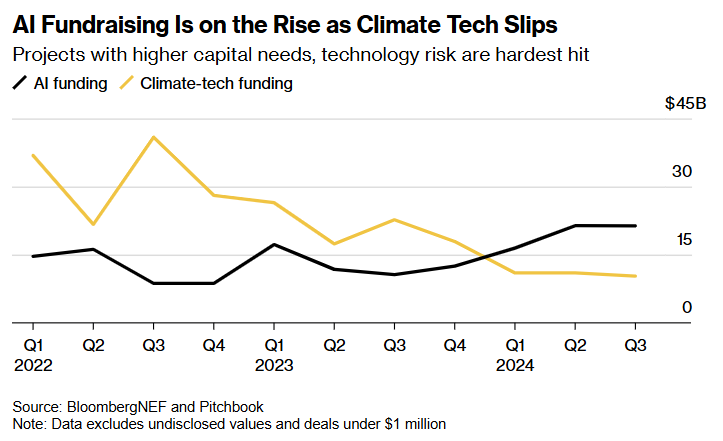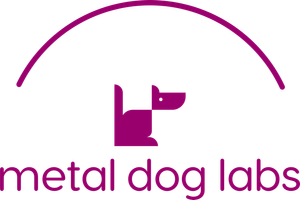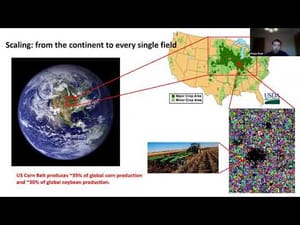Interesting happenings from the world of AgriFoodTech in the last month
I am excited to launch a new monthly feature for SFTW readers called “Last Month in AgriFoodTech”!
The world of Food / AgTech is constantly evolving with many advancements in new technologies, business models, and organizations. It is impossible to keep track of everything.
“Last Month in AgriFoodTech” provides you a quick snack of 20-30 bite-sized items from the last month, with a brief commentary from me. It will typically not cover stories which have been covered in the regular weekly newsletter.
This feature is available to both free and paid subscribers. The 15% offer on annual plans is still available if you subscribe within the next 2 weeks.
I would love to hear your feedback on this new monthly feature.
Artificial Intelligence & Digital Transformation
Dia de los Muertos edition
All cultures have a way to remember, honor, and celebrate people who have passed. But what if AI can help them “bring back to life” in a digital format? A company in China is using AI to “preserve, animate, and interact” with lost loved ones as existing family and friends mourn and try to heal.
Many companies in China are offering avatars of deceased loved ones which can speak words tied to an LLM. With more and more of our lives going online, it might be possible to train a model which learns your interests, how you talk, what are your relationships, and can be used as a digital representation after an individual has passed. The current prices for these digital replicas are around $ 1000, but the price can be much lower.
What about people who are alive? Would you be willing to talk with a digital model of your agronomist, which has been trained with agronomy expertise, and talks like your agronomist?
Reference: SFTW edition 135. CCAs or LLMs?
Robots are getting dexterous (or should I say ambidextrous?)
I have talked about the Moravec’s Paradox which makes it difficult for robots to learn simple manual functions like picking up objects, but can do complicated math. But robots from Google DeepMind are getting dexterous by the day, and can now tie shoelaces, put up a shirt on a hanger, insert a gear, work in a random kitchen etc. When will they clean our houses?
When will they pick strawberries more economically than a human worker?
Reference: SFTW edition 122. Moravec’s Paradox for Ag Robotics
Knowledge-Guided Machine Learning for GHG emissions
Researchers at UIUC are using a combination of process models and machine learning models to integrate the knowledge embedded in process based models with high-resolution remote sensing observations and machine learning techniques.
The combination of these approaches is very effective, and I believe this will make AI solutions more sophisticated as they combine the best of science and human intelligence with the smarts and data processing capabilities of a pure AI model.
Reference: SFTW edition “Scaling Innovation: Traive Finance” and use of knowledge graphs in combination with AI for financial models
AI growth fund from Peakbridge
AI is sucking up all the oxygen across different types and sectors of funding. There is now evidence that AI is taking away funding from climate tech as well.

There is new evidence within the Agrifoodtech sector as agrifoodtech investor PeakBridge has closed its Growth Fund II at $ 187 MM. The fund targets Series A and B stage startups in US, Europe, and Israel.
Rice or AI?
Taiwan is facing one of the worst droughts in more than a century, which has cut off farmers from water sources, and starved the world’s most advanced semiconductor factories which use water.
How should you allocate your limited water supply between rice fields and semiconductor factories? Given the strategic importance of chip manufacturing for Taiwan, Taiwan is prioritizing semiconductor factories over growing rice.
What do you think about this decision?
Syngenta adds GenAI to Cropwise
Crop Input companies care the most about selling inputs to farmers, establishing a relationship of trust, and increasing the lifetime value of every farmer customer. To this effect, Syngenta’s Cropwise has added a GenAI component to help with seed recommendations and placement, predictive modeling, and providing site specific recommendations.
This is a good lesson for any GenAI company. If you are building a GenAI product, which will be embedded within an existing application, be clear about how it will help your customer achieve their goals, and ideally have data to show proof points.
GenAI to support equipment dealers
Startup Brilliant Harvest is utilizing GenAI to streamline and automate ag-equipment sales and service for equipment dealers. An equipment dealer has to train their staff on the ins and outs of all the brands and models of equipment they service and sell, and it can be a daunting task. A GenAI agent trained on different manuals, and other customer service data can act as a great wingman for the human sales or service person, and help them be more effective, and allow them to spend the time on building and strengthening relationships.
Climate and sustainability
“Ministry for the future?”
ClimateAI ran simulations for farmers in Maharashtra, India, and found that extreme heat and drought would lead to an approximately 30% decrease in tomato output in the region over the next two decades. These insights were then used by a tomato seed company to accelerate trials for launching drought-tolerant seeds for smallholder farmers in the area.
They also teamed up with a major food and beverage company in India to roll out adaptation playbooks in 300 villages, helping around 100,000 smallholder farmers. The playbooks offer tips on the best seeds to use, how to manage water, and the best times to plant and harvest, resulting in productivity that has gone up by as much as 40%.
WaterEquity raises $ 100 million Water & Climate Resilience Fund
As I have said many times before, access to water will be a defining issue for the 21st century. We are already seeing evidence of that with the falling Ogallala water table, the SGMA act in California, and the excessive ground water withdrawals in countries like India. We need additional investment in research and infrastructure development.
Kansas City, Missouri-based asset manager WaterEquity has raised over $100 million for its Water & Climate Resilience Fund. WaterEquity, whose sole focus is to finance water and sanitation solutions in emerging and frontier markets, has attracted a high-profile roster of investors, including anchor investor Microsoft through its Climate Innovation Fund, among others. In addition to Microsoft, other participants in the round include Starbucks and Xylem as strategic investors, alongside Ecolab, Reckitt, Gap and others.
AgriFood corporations and Scope 3 emissions (Ceres Report)
Scope 3 GHG emissions, which are indirect emissions from a company’s value chain, can be more difficult for companies to manage, as companies must rely on their direct and indirect suppliers as well as customers to take actions to reduce these emissions. However, without action on scope 3 GHG emissions, companies in this sector will be unable to achieve total GHG emissions reductions in line with a 1.5°C future and may be exposed to risks related to weakened supply chain resilience to a changing climate.
Of the 31 companies that disclosed that their scope 1 and 2 emissions dropped compared to their base year GHG emissions, 14 companies disclosed that their total GHG emissions increased or did not change significantly due to increases or insignificant reduction in scope 3 emissions. The result is clear. To reduce total GHG emissions, which have an outsized impact on their total emissions’ footprint, companies must act on scope 3 emissions.
- 60% of companies are making progress on scope 1 and scope 2 emissions from their direct operations.
- Slower progress on addressing scope 3 emissions from their supply chains is holding companies back from reducing total emissions.
- Companies with full scope emissions reduction targets are more likely to be reducing emissions.
- Companies are beginning to clarify their emissions disclosures, but there is room for improvement to enhance comparability and the ability to assess progress over time.
As a startup, if you can help these companies meet these goals, you will have a willing customer with some willingness to pay!

Unlocking demand for regenerative agriculture
Ryan Pintado-Vertner, Founder and CEO of Smoketown released a report titled “Unlocking Demand for Regenerative A Crowdsourced Blueprint for Accelerating Consumer Demand for Regenerative Agriculture” which has four main elements.
- Increase Consumer Empathy
- Refine the Messaging Frame
- Double Down on Loyalty and Share of Wallet
- Boldly Collaborate for Big Awareness
I am skeptical on these topics, as I believe regen ag has to be profitable on its own.
Reference: SFTW edition “Scaling Innovation: Regenerative Agriculture”
Robotics and Automation
Ecorobotix reduces drift by 95%
Spray drift is a big challenge while spraying due to wind, and other conditions. Ecorobotix, which has 100s of units in operation, has been certified to achieve 95% drift reduction, based on an assessment by the independent Technical Committee for Technology Assessment. This is very important for farmers to comply with plant protection product regulations and environment conservation efforts. The certification is valid for the ARA sprayer model and is certified in Germany and Netherlands.
Helping customers meet regulatory requirements is a viable product offering, and if you can do it while saving on input costs, it is even better.
Is working with OEMs the only option?
One of the well known challenges of the agriculture sector is the concentrated nature of the industry in almost every sub-sector. For example, 4-5 companies control the majority of the seed and chemical business, 4-5 companies control the majority of the OEM business, 4-5 companies control the majority of the off-take business etc. Tim Bucher, CEO of Agtonomy has some advice for robotics startups.
We recognize that farmers don’t have the time to waste on AgTech start-ups to manufacture machines that take years to deliver and have yet to earn grower’s trust. That’s why we’ve taken a more common-sense approach by partnering directly with established OEMs and IEMs (integrated equipment manufacturers) as well as strategic investors.
These collaborations are designed to leverage trusted brands and existing dealer networks, ensuring farmers receive reliable, autonomous solutions that seamlessly integrate into their operations and drive profitability.
Small autonomous and solar robots
Small robots are all the rage in specialty agriculture
Danish AgTech company FarmDroid recently raised Euro 10.5 million for its autonomous solar powered agriculture robot. The robot can sow, remove weeds, and reduce pesticides usage with a micro spray system, while operating continuously in the field powered by solar energy.
Will we have a swarm of small and mid-sized robots operating in fields instead of large equipment?
2024 Crop Robotics Landscape
The Mixing Bowl released their 2024 Crop Robotics Landscape. (see image below).
The number of crop robotics companies has increased by 40% from 2022 (250 companies) to 2024 (330 companies). Funding for crop robotics companies has remained relatively stable in 2024 (H1 $ 399 million), compared to 2022 ($ 709 million) and 2023 ($ 751 million). Adoption has been slow but steady with rising labor costs, and the difficulty in finding skilled labor acting as tailwinds for the sector.

Mechanize arduous tasks: Automated detasseling
Extreme heat, drought and intense rainfall have made labor-intensive tasks difficult in agriculture. And it’s now more often done by migrant farmworkers who sometimes put in 20-hour days to keep up.
Farm-tech company PowerPollen has created a tool a tractor can use to collect pollen from male plants without having to remove the tassel. It can be saved for future crops. Connie Bowen highlighted the impact on human labor, and arduous tasks during her panel discussion at FIRA and also in her newsletter “Agriculture is for people.”
Many small changes lead to big changes over the longer period.
Autosteer for mid-range tractors
Autosteer was one of the most quickly adopted technologies within agriculture. Without surprise, a majority of the adoption was led by large sized farms. Topcon agriculture is addressing the needs of small to medium sized farms which use mid-range tractors.
Topcon Agriculture has announced the release of its new Value Line Steering solution designed specifically for farmers using mid-range tractors on small to medium-sized farms. The new offering is making autosteering technology, typically used on larger machinery, accessible to a broader range of farmers.
The Value Line Steering solution is a package that includes a Global Navigation Satellite System (GNSS) receiver, electric steering wheel controller, touchscreen console, and Horizon Lite software, compatible with front-wheel-steer tractors. Farmers also have the option to add local, satellite or RTK correction services such as Topcon’s Topnet Live for enhanced precision based on their own needs.
Value Chain
More chemicals to up the ante
Herbicidal resistance has gone mainstream with MIT Technology Review talking about herbicidal resistance and its impact on yield.
Since the 1980s, more and more plants have evolved to become immune to the biochemical mechanisms that herbicides leverage to kill them. This herbicidal resistance threatens to decrease yields—out-of-control weeds can reduce them by 50% or more, and extreme cases can wipe out whole fields.
There’s evidence of resistance developing to both of the chemical groups that have replaced or been mixed with Roundup to kill this weed: an herbicide called glufosinate and a pair of substances known as 2,4-D and dicamba. These two would normally kill many crops, too, but there are now millions of acres of corn and soy genetically modified to be impervious. So essentially the response has been to throw more chemicals at the problem.
Is it just about selling inputs?
For input companies, it is about selling inputs
Plantix started off as a tool to identify pests. With just a pest identification product, they struggled to raise money in spite of having a large and active user base. After they transitioned to be a sales enabler for pesticides for input companies and pesticide retailers,
And their strategy worked. Less than a month after the pitch in London, Plantix announced that it had received $7.3 million from a group of venture capital investors. In less than a year, it would raise another $5.5 million, this time with money from one of the largest retailers of pesticides in the world. Today, that company, Helm AG, owns Plantix, and the app is thriving: its 134,000 daily active users on average diagnose a pest every 1.5 seconds.
2024 worst financial year compared to 2007 for farmers?
The survey also asked if agriculture is on the brink of a recession. b. However, 54% of economists argue agriculture is already in a recession, with some economists pointing to only the crop sector seeing recession concerns.
In addition to the agriculture economists, AgriNews’ Erica Quinlan reported at the end of last week
that farmer sentiment about the ag economy reached its lowest levels since 2016, according to the Purdue University/CME Group Ag Economy Barometer.
Fertilizer producer Atlas Agro binding agreement for green nitrogen fertilizer
Green nitrogen fertilizer is an interesting product to reduce the GHG footprint for fertilizer. Swiss renewal fertilizer company Atlas Agro has announced a partnership agreement with International Raw Materials for the first at-scale, low carbon fertilizer production facility in the world with a capacity of 7700K short tons of nitrogen fertilizer annually in both liquid and solid form.
Atlas Agro focuses on localization of production close to end-use. Nitrate fertilizers are immediately available for plant absorption and prevent volatilization, while they promote higher protein content in crops.
What’s the right droplet size?
With rising input costs, it is critical to optimize input usage for the best possible productivity and profitability. If we take the case of spraying, different variables like surface tension of the liquid in the spray mixture, pressure, flow and nozzle configuration of the application device, and weather factors like temperature, sunlight, wind, and humidity at the time of spraying have an impact on spraying efficiency.
A company called AgZen has developed a two camera system connected to a spraying equipment. It uses images of the sprayed solution on the target plants to do adjustments needed to get an optimal degree of coverage with appropriately sized droplets.
The technology has been tested for use in cotton defoliation in trials at Texas A&M and it worked at 50% of the lowest use rate on the normal product label. It is being tested on wine grapes where a 30% reduction in rate was still efficacious.
Bayer Farmer Voice Survey
The Farmer Voice survey, commissioned by Bayer, gathered insights from over 2,000 farmers across Australia, Brazil, China, Germany, India, Kenya, Ukraine, and the United States.
Monetary investments, knowledge gaps, and user experience are some of the key barriers to broader digital adoption. (See image below). I believe technologies like AI in general and GenAI in particular can address knowledge gaps, improve the user experience, and service customers at a lower cost.

Getting working capital to small and medium sized farmers in Brazil
A lot of the investment in AgTech has gone to build products and tools for Big Ag. Big farms, big equipment, big agribusiness companies. Often, the small and midsize farmers lag in terms of tech availability and hence tech adoption. This is true even for getting access to financial vehicles to finance their operations and capital expenditure.
Agrifintech company Agrolend recently raised $ 53 million. They support farmers (small and medium sized) through its lending platform to offer credit for purchase of agriculture inputs such as seeds and crop protection products through a network of more than 150 partners.
The digital platform allows producers to access credit with less bureaucracy and quickly. The funding round was co-led by Syngenta, and other telecom and financial institutions. The company wants to serve between 5 to 10K small and medium-sized farmers across Brazil.


